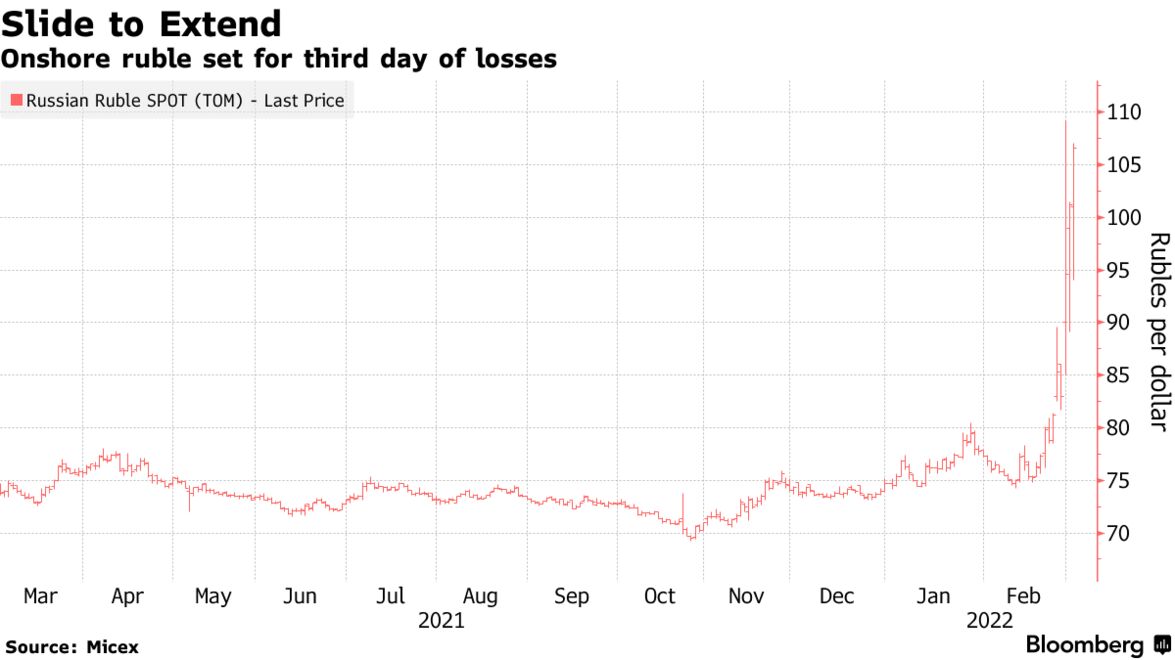The ruble fell for a third day, trading as low as 110 per U.S. dollar in onshore markets, after Russia pressed forward with its invasion into Ukraine.
The currency slid as much as 8% as the war entered a more brutal stage, with the mayor of Ukraine’s second-largest city saying residential areas were being bombed. Russia’s central bank restricted the transfer of coupon payments to foreign holders of ruble bonds and shuttered local stock trading for a third day, the longest shutdown for extraordinary circumstances since October 1998.
“It’s really like putting a finger in the air to predict ruble at the moment,” said Mitul Kotecha, chief emerging-market Asia and Europe strategist at TD Securities in Singapore. “Given such high volatility, it’s suffice to say downside risks are intensifying.”
The currency traded 6.8% lower at 108.6 as of 1:02 p.m. in Moscow.
Russia has intensified capital controls in recent days to prevent a fund exodus. The authorities earlier banned residents from transferring foreign currency abroad and the central bank slapped a temporary freeze on sales of Russian securities by foreigners, seeking to close the exit for tens of billions of dollars, in response to the sanctions.
“Should tensions escalate further or if sanctions target Russia’s energy sector, we should expect the ruble to sell off much more significantly, and continuously hit new lows against the dollar,” Brendan McKenna and Nick Bennenbroek, economists at Wells Fargo Bank, wrote in a note.
U.S. President Joe Biden used his first State of the Union address to label Vladimir Putin a “dictator,” and said the Russian president would pay a high price for his invasion of Ukraine. China’s foreign minister told his Ukrainian counterpart in a call that Beijing is “extremely concerned” about the harm to civilians.
A gap persisted between the ruble’s value in Moscow and that in the overseas interbank market. The offshore rate fell as low as 122.25 per dollar before trading around 115.

